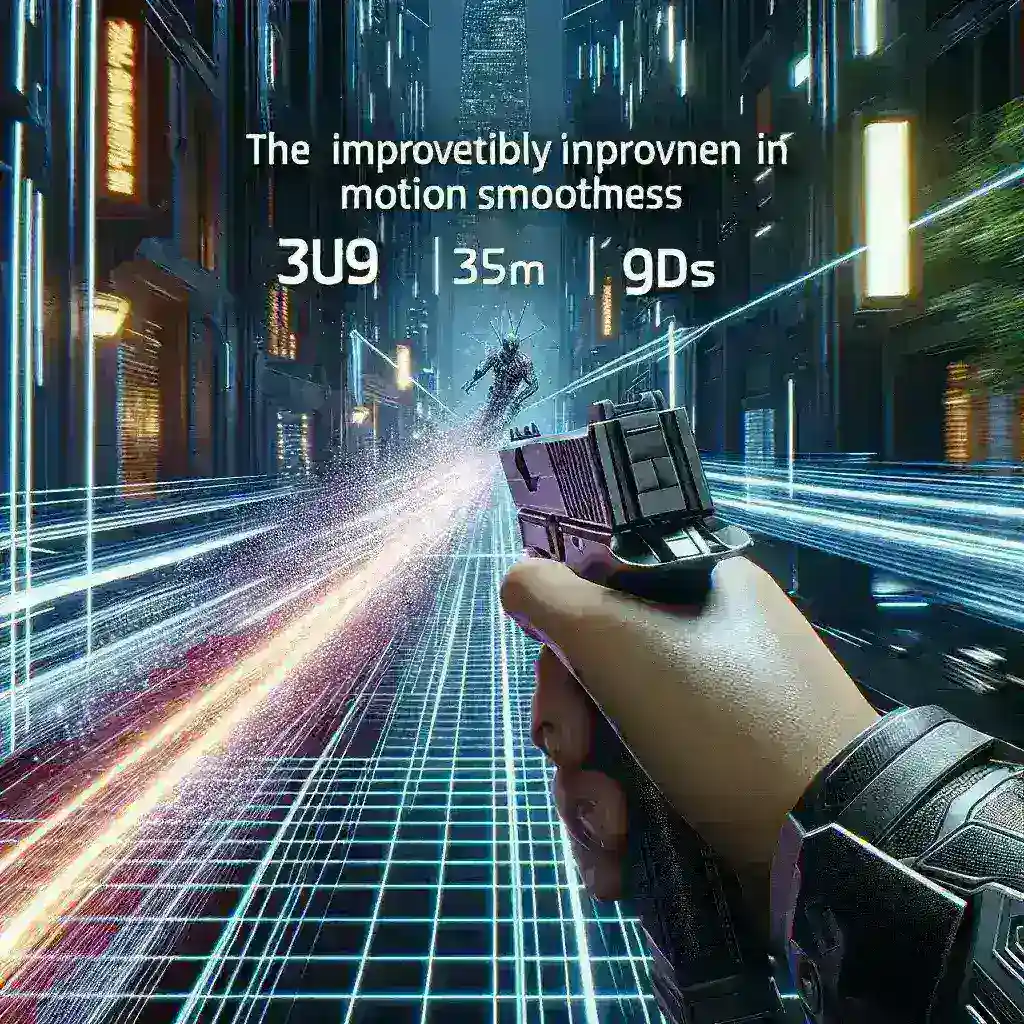Understanding Smooth Motion Technology
Smooth Motion technology is a groundbreaking advancement in the gaming industry that enhances the visual experience by providing a smoother, more consistent frame rate. Traditionally, gamers have faced challenges with frame drops and stuttering, especially during high-intensity scenes. This is where Smooth Motion technology comes into play, utilizing sophisticated algorithms to optimize frame rendering and significantly boost frames per second (FPS).
What Are FPS Gains?
FPS, or Frames Per Second, is a critical metric in gaming that determines how many frames your graphics card can render in one second. A higher FPS typically translates to a smoother gaming experience, reduced input lag, and improved overall performance. Here are some key benefits of higher FPS in gaming:
- Smoother Gameplay: Higher FPS ensures that animations and movements appear more fluid.
- Reduced Motion Blur: With more frames rendered, motion blur is minimized, leading to clearer images during fast-paced action.
- Improved Responsiveness: Players experience less input lag, which is crucial in competitive gaming.
The Role of Smooth Motion Technology
Smooth Motion technology enhances FPS in games by addressing common performance issues. By interpolating frames and optimizing how images are shown, it allows for a more stable and fluid gaming experience without requiring excessive hardware upgrades. The technology achieves this by:
- Frame Interpolation: This technique estimates intermediate frames between rendered frames, effectively increasing the perceived frame rate.
- Adaptive Sync: By synchronizing the display refresh rate with the frame rate, Smooth Motion technology minimizes tearing and stuttering.
- Dynamic Resolution Scaling: This feature automatically adjusts the resolution based on performance demands, ensuring that the FPS remains high even in graphically demanding scenarios.
The Historical Context of FPS and Gaming
The quest for higher FPS has been a long-standing goal in the gaming community. Early games were often limited by hardware constraints, leading to experiences that could be choppy and visually unappealing. As technology evolved, so did the potential for higher FPS. The introduction of 60 FPS gaming became a benchmark, with many gamers striving for it as a standard. Today, with advancements like Smooth Motion technology, achieving and surpassing this benchmark is becoming more attainable.
Future Predictions for FPS in Gaming
With the continuous evolution of gaming technology, the future looks promising for FPS gains. As graphics processing units (GPUs) become more powerful and game developers adopt advanced rendering techniques, we can expect:
- Increased Frame Rates: Next-gen consoles and high-end PCs are likely to push FPS limits even higher.
- More Immersive Experiences: Enhanced graphics and smoother gameplay will lead to more immersive gaming experiences.
- Greater Accessibility: With improvements in cloud gaming and streaming, players will be able to experience high FPS without the need for expensive hardware.
Pros and Cons of Smooth Motion Technology
Pros
- Enhanced Visual Experience: Smoother graphics make gameplay more enjoyable and immersive.
- Better Performance: Increased FPS can lead to better responsiveness in games.
- Lower Hardware Requirements: Smooth Motion technology can improve performance without needing constant hardware upgrades.
Cons
- Possible Artifacts: Frame interpolation may introduce visual artifacts or unnatural motion in certain game scenarios.
- Increased Latency: Depending on the implementation, some users may experience slightly increased input latency.
- Hardware Dependence: The effectiveness of Smooth Motion technology can vary based on the hardware used.
Real Examples of FPS Gains with Smooth Motion Technology
Several modern games have successfully integrated Smooth Motion technology, resulting in significant FPS gains:
- First-Person Shooters: Games like Call of Duty and Battlefield have adopted technology that allows seamless transitions between frames, resulting in smoother gameplay during intense firefights.
- Racing Games: Titles such as Forza Horizon benefit greatly from Smooth Motion, providing crisp visuals during high-speed action.
- Open-World Games: In expansive worlds like those in The Witcher 3, Smooth Motion technology helps maintain FPS even as the player navigates complex environments.
Cultural Relevance of FPS in Gaming
FPS is not just a technical measurement; it has cultural implications within the gaming community. Gamers often debate the merits of high FPS versus graphical fidelity, with competitive gamers prioritizing FPS for its direct impact on performance. Tournaments often have strict FPS requirements, highlighting its importance in the eSports arena.
Statistics on FPS Gains
Numerous studies and surveys in the gaming community illustrate the substantial impact of Smooth Motion technology on FPS. For instance:
- Games that utilize frame interpolation can see performance improvements of up to 30% in FPS.
- Players reported enhanced gaming experiences with up to 60% less motion blur when using Smooth Motion technology.
- Competitive gamers have noted a 15% improvement in response times, directly correlating with smoother FPS.
Expert Insights
Industry experts express optimism about the future of FPS in gaming. According to a leading game developer, “Smooth Motion technology is not just a trend; it’s a fundamental shift in how we design and experience games. As technology continues to evolve, we will see FPS gains that were once unimaginable.”
Personal Anecdotes
Many gamers have shared their experiences with Smooth Motion technology. One player, an avid FPS enthusiast, stated, “After upgrading to a monitor that supports Smooth Motion, I realized how much I was missing. The difference in gameplay, especially in competitive scenes, is night and day. It feels like I have a split-second advantage over my opponents!”
Conclusion
Smooth Motion technology represents a significant advancement in the pursuit of higher FPS in gaming. By addressing performance issues and enhancing the visual experience, it empowers gamers to enjoy smoother gameplay and improved responsiveness. As we look to the future, the integration of such technologies will undoubtedly define the next generation of gaming experiences, pushing the boundaries of what is possible in the realm of FPS gains.

